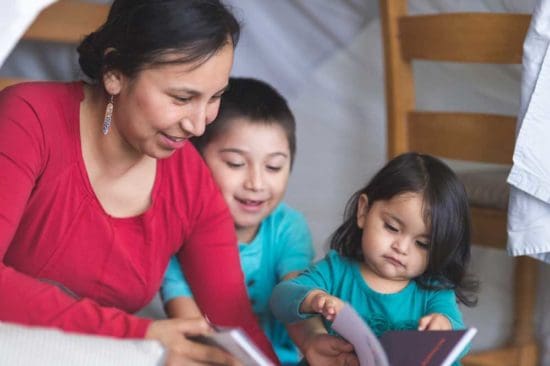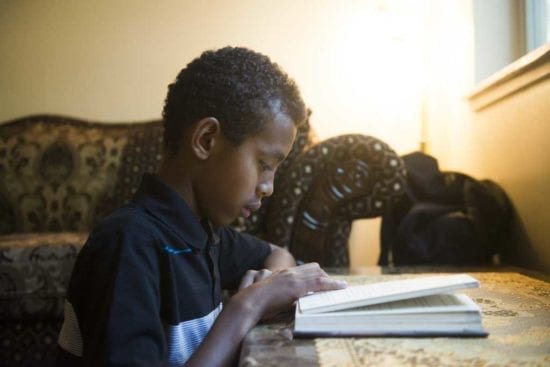Trường công là gì?
Trường công cung cấp giáo dục miễn phí cho trẻ em ở Hoa Kỳ. Chúng được chính phủ chi trả bằng thuế địa phương, tiền của tiểu bang và nguồn lực liên bang.
Bất kỳ trẻ em nào cũng có thể học trường công. Có những đứa trẻ đến từ nhiều nền văn hóa khác nhau nói nhiều ngôn ngữ khác nhau tại các trường công lập trên khắp USA. Bạn không cần phải là công dân Hoa Kỳ hoặc thường trú nhân để con bạn có thể theo học trường công.
Các cấp độ trường công
Trường công được chia thành nhiều cấp lớp khác nhau, từ mẫu giáo đến lớp 12. Trẻ em thường bắt đầu đi học vào khoảng 5 tuổi và kết thúc vào khoảng 18 tuổi.
Trường tiểu học (Từ 5 đến 10 tuổi)
Ở trường tiểu học, trẻ em được học những kiến thức cơ bản như đọc, viết và toán.
Trung học cơ sở (Từ 11 đến 13 tuổi)
Trường Trung cấpở là trường tiếp theo sau trường tiểu học. Tại đây, trẻ em được học thêm về toán, khoa học và lịch sử, đồng thời khám phá các môn học khác như nghệ thuật và âm nhạc. Họ cũng học cách học tập tốt hơn và sắp xếp công việc của mình.
Trung học phổ thông (Từ 14 đến 18 tuổi)
Trung học phổ thông là nơi học sinh chuẩn bị cho tương lai của mình. Họ học những lớp khó hơn về toán và lịch sử. Họ cũng có thể chọn các lớp học mà họ quan tâm và giúp họ chuẩn bị vào đại học hoặc tìm việc làm.
| Các tiểu bang có những quy định khác nhau về độ tuổi mà pháp luật yêu cầu trẻ em phải đến trường. |
Đăng ký cho con bạn
Quy định về việc đăng ký cho con bạn đi học có thể khác nhau tùy thuộc vào nơi bạn sống. Đầu tiên, bạn sẽ muốn tìm hiểu xem trường nào phục vụ khu vực bạn đang sống. Sau đó, bạn sẽ cần thu thập mọi giấy tờ cần thiết, chẳng hạn như bằng chứng cư trú và hồ sơ sức khỏe, và liên hệ với trường.
Tìm hiểu thêm về việc ghi danh cho con bạn.
Mẹo để bắt đầu một trường học mới:
- Nếu con bạn cần trợ giúp để học tiếng Anh, hãy hỏi xem nhà trường có cung cấp dịch vụ hỗ trợ nào không.
- Cố gắng đến thăm trường trong các sự kiện như ngày chào đón học sinh hoặc đề nghị được cùng con tham quan trường.
- Hỏi về câu lạc bộ hoặc môn thể thao mà con bạn có thể tham gia. Đây là một cách tốt để kết bạn.
| Nếu bạn không nói được tiếng Anh, hãy hỏi nhà trường xem họ có thông dịch viên không. Ngoài ra còn có các ứng dụng và công cụ bạn có thể sử dụng để giúp bạn giao tiếp với nhân viên nhà trường của con bạn. Tìm hiểu thêm. |
Chương trình giảng dạy
Thuật ngữ “chương trình giảng dạy” đề cập đến tập hợp các môn học và thông tin được giảng dạy trong các trường công. Chương trình giảng dạy ở trường công có thể khác nhau tùy theo từng địa điểm.
Các chủ đề thường bao gồm:
- Nghệ thuật ngôn ngữ tiếng Anh: đọc, viết
- Toán học: số học, đại số, hình học, thống kê
- Khoa học: sinh học, hóa học, vật lý, khoa học trái đất
- Nghệ thuật: nghệ thuật thị giác, âm nhạc, nghệ thuật trình diễn
- Giáo dục thể chất và thể dục
- Công nghệ và khoa học máy tính
- Sức khỏe: sức khỏe thể chất và sức khỏe tinh thần
- Ngôn ngữ nước ngoài
Điều quan trọng cần lưu ý là những điều này có thể khác nhau tùy theo cấp lớp, khu vực trường học, tiểu bang và các tiêu chuẩn hiện hành.
Điểm số
Các trường sử dụng điểm số để đánh giá thành tích học tập của học sinh trong lớp. Điểm số có thể dựa trên các yếu tố như sự tham gia lớp học, bài tập về nhà, dự án và bài kiểm tra. Điểm số có thể cho thấy học sinh biết được những gì. Họ có thể giúp xác định xem học sinh có thể tham gia các lớp nâng cao hay cần thêm trợ giúp hay không.
Điểm số thường được biểu thị bằng chữ cái (A, B, C, D, F) hoặc số (90, 80, 70). 'A' là điểm cao nhất và 'F' có nghĩa là học sinh không đạt yêu cầu.
Một số trường sử dụng hệ thống Điểm trung bình tích lũy (GPA) cũng như điểm chữ. GPA tính điểm thành tích học tập của học sinh trong một khoảng thời gian cụ thể, chẳng hạn như một học kỳ hoặc năm học. Học sinh nhỏ tuổi hơn có thể có những lựa chọn thay thế cho điểm số chỉ nêu rõ liệu trẻ có đạt tiêu chuẩn theo độ tuổi hay không.
Lưu ý: Ở USA, từ 'cấp' có hai nghĩa. Nó có thể ám chỉ điểm số hoặc thành tích học tập của học sinh ở trường, nhưng cũng có thể có nghĩa là năm học của con bạn, chẳng hạn như 'lớp một' hoặc 'lớp hai'.
Các bài kiểm tra chuẩn hóa
Học sinh ở USA thường xuyên phải làm các bài kiểm tra chuẩn hóa, khác với các bài kiểm tra mà các em phải làm trong các lớp học chính thức. Các bài kiểm tra chuẩn hóa được thiết kế theo cùng một cách để có thể triển khai cho tất cả các trường trong cùng điều kiện. Họ giúp đánh giá mức độ thành công của cả học sinh và trường học.
Khi con bạn lớn hơn và cân nhắc đến việc học đại học, chúng cũng có thể tham gia các kỳ thi chuyên ngành như SAT hoặc ACT. Những bài kiểm tra này rất quan trọng để vào đại học.
Bữa ăn ở trường
Hầu hết các trường đều cho phép bạn lựa chọn ăn trưa tại trường hoặc cho con bạn tự mang đồ ăn đến trường. Thông thường, bạn phải trả tiền cho bữa ăn do trường cung cấp.
Những gia đình không có tiền trả tiền ăn có thể được ăn miễn phí hoặc với mức giá thấp hơn. Một số trường cũng có chương trình ăn sáng miễn phí cho các gia đình có thu nhập thấp. Bạn có thể nộp đơn cho trường hoặc quận của mình để xem xét. Liên hệ với nhân viên nhà trường để biết thêm thông tin.
Chi phí trường học
Trường công lập Hoa Kỳ miễn phí cho con bạn theo học nhưng vẫn có thể có những chi phí khác mà gia đình phải trả, bao gồm:
- Bữa trưa ở trường, như đã đề cập ở trên.
- Đồ dùng học tập như vở, bút và ba lô.
- Các chương trình đặc biệt như thể thao hoặc nghệ thuật sau giờ học.
- Các chuyến tham quan thực tế như bảo tàng và công viên.
- Đồng phục học sinh hoặc trang phục cụ thể.
Nhiều trường học và tổ chức địa phương hỗ trợ chi trả các chi phí liên quan đến trường học. Đừng ngại hỏi văn phòng nhà trường về những lựa chọn của bạn. Họ ở đó để giúp đỡ những việc như thế này.
Quyền và luật của sinh viên
Điều quan trọng đối với các gia đình mới đến Hoa Kỳ là phải biết rằng học sinh có quyền trong trường công. Những quyền này bao gồm:
- Con bạn không thể bị đối xử khác biệt vì chủng tộc, màu da, quốc tịch, khuynh hướng tình dục, khuyết tật, tôn giáo hoặc địa vị.
- Nếu con bạn không nói được tiếng Anh, các em có quyền được hỗ trợ ngôn ngữ miễn phí.
- Con bạn có quyền tự do ngôn luận và thực hành đức tin của mình ở trường, bao gồm quyền mặc trang phục tôn giáo.
- Con bạn có quyền riêng tư. Nhà trường không được hỏi về tình trạng di trú của học sinh.
Trẻ em ở Hoa Kỳ phải đi học. Đó là luật. Cha mẹ phải đảm bảo con mình đi học đều đặn. Nếu không, bạn có thể phải chịu hậu quả pháp lý tùy thuộc vào tiểu bang nơi bạn sinh sống.
Tìm hiểu thêm về quyền và luật của sinh viên.
Hỗ trợ con bạn
Sự thành công của trẻ ở trường phụ thuộc vào sự hỗ trợ từ cha mẹ và người chăm sóc. Sau đây là một số điều bạn có thể làm để giúp trẻ làm tốt:
- Đọc email của trường và kiểm tra các nguồn tài nguyên khác, như trang web của trường, để biết con bạn đang học gì và những gì đang diễn ra tại trường.
- Hỏi giáo viên của con bạn, văn phòng nhà trường và hiệu trưởng những câu hỏi. Đôi khi, email là cách tốt để họ có thời gian trả lời.
- Kiểm tra con của bạn. Hãy hỏi họ về những gì họ đang học và đề nghị giúp đỡ.
- Hãy chú ý đến bài tập về nhà và kỳ vọng của con bạn đối với lớp học.
- Đăng ký chương trình học dành cho phụ huynh.
- Đọc và ký thông báo cho phụ huynh.
- Xem lại nội quy và quy tắc ứng xử của trường.
Tìm hiểu thêm về việc hỗ trợ con bạn.
(https://www.youtube.com/watch?v=cbjxdPncdEs)
Nhân viên nhà trường và giáo viên
Có nhiều đội ngũ nhân viên nhà trường khác nhau để giúp con bạn học tập và được hỗ trợ.
- Giáo viên chịu trách nhiệm về việc giáo dục hàng ngày của học sinh.
- Hiệu trưởng giám sát toàn bộ trường học và giải quyết những vấn đề vượt quá khả năng của giáo viên.
- Các cố vấn hướng nghiệp cung cấp hỗ trợ cả về mặt học thuật và cá nhân.
- Nhân viên lễ tân có thể hỗ trợ ghi danh và giải đáp các thắc mắc chung.
- Chuyên gia ESL (Tiếng Anh như một ngôn ngữ thứ hai) giúp người học tiếng Anh cải thiện kỹ năng Tiếng Anh của mình.
Tìm hiểu thêm về vai trò của nhân viên và giáo viên.
Hoạt động ngoại khóa
Hoạt động ngoại khóa là các câu lạc bộ hoặc nhóm đặc biệt mà con bạn có thể tham gia ở trường mà không nằm trong các lớp học chính thức. Chúng thường miễn phí và diễn ra trước hoặc sau giờ học. Những hoạt động này là cách tuyệt vời để con bạn học hỏi những điều mới, kết bạn và cảm thấy mình là một phần của cộng đồng mới.
Mỗi trường đều khác nhau nhưng một số hoạt động ngoại khóa có thể bao gồm:
- Các môn thể thao như bóng đá hoặc bóng rổ
- Các câu lạc bộ cho các sở thích khác nhau như cờ vua, kịch hoặc nghệ thuật
- Chính quyền sinh viên giúp đưa ra quyết định cho trường
- Dịch vụ cộng đồng giúp đỡ mọi người trong khu vực của bạn
- Các cuộc thi học thuật như cuộc thi đánh vần hoặc thử thách toán học
- Âm nhạc và nghệ thuật, như ban nhạc hoặc sân khấu
- Làm việc trên báo trường hoặc kỷ yếu
- Các câu lạc bộ tôn vinh các nền văn hóa khác nhau
- Các chương trình học về lãnh đạo
Tham gia các hoạt động này có thể giúp con bạn phát triển theo nhiều cách, không chỉ trong các môn học ở trường. Đây cũng là cơ hội tuyệt vời để thể hiện những tài năng và sở thích khác nhau khi đến thời điểm nộp đơn vào trường đại học hoặc xin việc.
Chuẩn bị vào đại học và nghề nghiệp
Các trường trung học cung cấp sự hỗ trợ cho học sinh chuẩn bị cho cuộc sống sau khi tốt nghiệp. Các cố vấn hướng nghiệp có thể thảo luận về các lựa chọn như trường cao đẳng, trường dạy nghề và chương trình học nghề. Các trường cũng cung cấp các lớp học, hội thảo và thực tập để dạy các kỹ năng thực tế và cung cấp những trải nghiệm thực tế.
Hội chợ việc làm và tham quan trường đại học giúp sinh viên có nhiều lựa chọn khác nhau. Những sự kiện này giúp họ đưa ra quyết định sáng suốt hơn. Bạn nên bắt đầu những cuộc trò chuyện này sớm và tận dụng những nguồn lực sẵn có.
An toàn trường học
Nhà trường ưu tiên sự an toàn của mọi người. Họ có kế hoạch và diễn tập để biết phải làm gì trong trường hợp khẩn cấp, như hỏa hoạn hoặc các tình huống nguy hiểm khác. Một số trường có camera an ninh và kiểm tra ID để đảm bảo chỉ những người phù hợp mới được vào.
Ngoài ra, nhà trường còn chịu trách nhiệm giải quyết các vấn đề như bắt nạt giữa học sinh. Điều quan trọng là phải hiểu kế hoạch an toàn của trường và trao đổi với nhân viên nhà trường nếu bạn có thắc mắc.
Các loại trường học khác
Ngoài trường công, còn có nhiều lựa chọn giáo dục khác.
Trường tư là một giải pháp thay thế có nhiều lợi thế rõ rệt, nhưng cũng có chi phí. Sau đây là những điều bạn nên cân nhắc:
- Học phí là bắt buộc.
- Học bổng có thể dành cho những gia đình có thu nhập hạn chế.
Các trường đặc quyền nhận được tài trợ từ các tổ chức công. Họ cũng hoạt động độc lập hơn. Những điểm quan trọng bao gồm:
- Được tài trợ bằng tiền thuế của người dân nhưng vẫn tự vận hành.
- Số lượng tuyển sinh có thể có hạn nên thường phải có danh sách chờ.
- Linh hoạt trong chương trình giảng dạy và hoạt động.
Học tại nhà mang lại trải nghiệm giáo dục cá nhân hóa nhất, do cha mẹ hoặc gia sư hướng dẫn. Sau đây là những thông tin chi tiết chính:
- Cha mẹ hoặc gia sư dạy kèm tại nhà.
- Phụ huynh phải tuân thủ các quy định cụ thể của tiểu bang.
- Cần phải đầu tư vào tài liệu giáo dục như sách giáo khoa và phần mềm.
Thông tin trên trang này đến từ U.S. Department of Education và các nguồn đáng tin cậy khác. Chúng tôi mong muốn cung cấp thông tin dễ hiểu được cập nhật thường xuyên. Thông tin này không phải là lời khuyên pháp lý.


